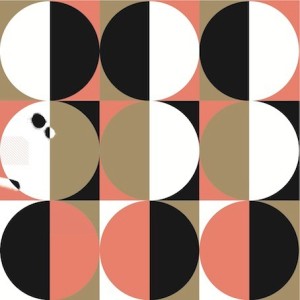New York, 1983: even one year ahead of George Orwell’s prediction for totalitarian apocalypse, what had earlier in the century been celebrated as the world’s greatest city was in a crumbling state of decay. With crime-ridden streets, famously dangerous and vandalised mass transit, and rock-bottom rents across lower Manhattan, the wasteland had become something of a Mecca for experimental art and a burgeoning dance music community that would surge to worldwide prominence as the metropolis slowly shed its sorrows. However, its early days saw bleak times, and it was into this complex tapestry of rising art movements and darker currents that Death Comet Crew arrived.
Born out of the ashes of Stuart Argabright’s celebrated (and now-revived) Ike Yard, and featuring members of both that group and later project Black Rain, the ‘Crew was also a legitimate reflection of the early era of electro and hip hop and featured contributions from DJ High Priest and legendary art-rapper Rammellzee (RIP). Too avant to achieve more than a scant discography in the early days, they remained in contact with each other until the early-2000s experimental rap movement rediscovered their work, which led to a compilation album release of archival material on Troubleman Unlimited (This Is Riphop), touring, and further recording. However, as Rammellzee’s health declined until his death in 2010, Argabright focused on other projects even as a number of completed tracks remained unreleased.
Ghost Among The Crew, released in late 2013 after a flurry of activity from Argabright under different projects, is therefore technically their debut album, a tribute to a lost comrade, and a step into the future for what remains an active project to be further explored with other musicians and vocalists. Unsurprisingly, it’s also a wide-ranging affair that combines the members’ longtime involvement in industrial and more fusion-influenced sounds with highly abstracted threads of hip hop and experimental electronics. There is a lot of ground and rough emotional terrain covered here, and his collaborators bring strong instrumental skills and presence to the album on bass, guitar and keyboards.
The record begins with Rammellzee’s three completed vocal contributions, which weave complex webs of his vocals over backing tracks composed of fluid live instrumental jams, minimal funk drum machine backing that would not have sounded out of place in their mid ’80s origins, and occasional samples and scratching. ‘Drag Racing’, which opens the second side, shifts things into a much harder mode with Rammellzee going at full throttle in a rant similar to Malcolm Mooney’s more obtuse performances over music that makes a fair match for the vocal style: call it Can dragged into a more electronic and modern milieu. It’s also the last track featuring the "ghost".
For the remainder of the album, the core quartet is joined on two tracks by vocalist Nomi Ruiz for results that vary from the full bore kraut ‘Moon on Titan Seas’ and the esoteric and exotic jazz-laced space jam ‘Run Map’, to harder, beatbox-driven pieces that bear more recognisable links to the group’s 80s New York heritage. The music is in a continual stage of evolution and improvisation, within which tracks can abruptly and fluidly shift gears. The presence of High Priest throughout on turntables and samples lends a special unpredictability to things, often operating in contrast to the band’s more psychedelic passages, before melding them into tense, high-density webs of abstracted funk, overlaid with spaced-out electronics and continuous instrumental jamming.
For all of the efforts many other musical groups have taken at producing the kind of polyglot and ceaselessly roaming sounds Death Comet Crew display here, the number of really striking records made is actually quite small. It’s not surprising, based on the individual members’ long backgrounds in the New York experimental music scene, that they manage to pull this off with as much flair as they do and without ever losing impact. Music which draws from such a broad range of styles too often takes superficially from most of them and descends into cliche, but these players have been at the forefront if their areas for decades, and that empathy and cohesion shines through.
That this album was released at all can be considered something of a surprise and a vindication for musicians whose work went under-recognised for far too long, but that it arrives at this moment on Powell’s Diagonal label shows that it may have at last found its time. Although so much has changed since their forming, again now DJs and club audiences are looking towards more open-ended sounds for inspiration. Death Comet Crew may not be storming dancefloors any time too soon, but Ghost Among The Crew shows that these seasoned hands still have much they can contribute towards a further breaking down of the divides in club music that they have resisted since the beginning.


